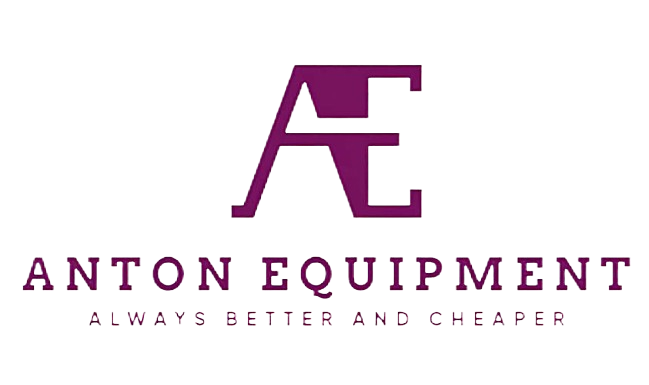News
Hydraulic Breakers: Enhancing Productivity in Demolition and Rock Breaking Contracts
Key Applications of Hydraulic Breakers in Demolition Projects
Concrete Demolition in Urban Environments
Hydraulic breakers are really important tools when it comes to tearing down buildings in cities, especially when working in tight spots and trying not to damage surrounding buildings. Their ability to target specific areas makes all the difference for protecting historical buildings during renovation work. Faster completion times matter a lot in city environments where every day lost translates into real money down the drain for developers. When picking out a hydraulic breaker for smashing through concrete, contractors need to look at what kind of concrete they're dealing with and how old it is. Older concrete structures often have different makeup and hardness levels compared to newer ones. Getting this right means better results on the job site and keeps everyone involved much safer during these complex urban demolition jobs.
High-Impact Rock Breaking for Mining Contracts
For mining operations dealing with tough rock formations, high impact hydraulic breakers have become essential tools that boost productivity by cracking through hard materials much faster than older methods. Some field tests show these modern breakers actually cut costs around 20% when compared against conventional techniques, which makes them pretty attractive for budget conscious operators. What kind of breaker gets chosen really matters a lot too because it directly affects how quickly minerals come out of the ground and whether a particular mining contract turns a profit or not. Getting this equipment selection right depends on knowing exactly what type of minerals need to be extracted and understanding the specific breaking challenges each site presents.
Skid Steer Attachments for Precision Work
Hydraulic breakers attached to skid steers let workers tackle tight spaces where bigger machines just won't fit, which is why they're so popular among landscapers and city crews working on sidewalks or drainage systems. These tools cut down on expenses because they eliminate the need for multiple specialized pieces of equipment. When paired with smaller machines, hydraulic breakers get the job done faster without bringing in heavy duty trucks that take up space and cost extra to operate. Contractors find this setup particularly useful when breaking up concrete patches or preparing ground for new installations. The real advantage comes from being able to complete complex jobs with fewer people and less downtime, something that makes a big difference on tight deadlines and budget conscious projects.
Enhancing Efficiency Across Industries
Excavator Hydraulic Breakers in Quarry Operations
Hydraulic breakers attached to excavators are game changers in quarries where they smash big rocks into manageable sizes, making everything from transport to further processing much simpler. The way these machines work actually cuts down on accidents while speeding things up considerably. Look at the numbers too – companies that switched to hydraulic breakers instead of relying on manual labor saw their output shoot up by around 30%. That kind of boost isn't just nice to have; it's essential for modern quarries trying to stay competitive without compromising worker safety or operational costs.
Mini Backhoe Tractor Compatibility for Small-Scale Projects
When mini backhoe tractors work well with hydraulic breaker attachments, they give contractors way more flexibility and get things done faster on those little jobs that don't justify bringing in big machines. The breakers pack quite a punch for their size, letting workers crack through concrete and asphalt right where needed without dragging in expensive excavators or jackhammers. What makes this combo so smart is how it cuts costs in multiple ways at once. Contractors save money because they don't have to lease out bigger equipment for every job, and maintenance stays manageable since there's less wear and tear on specialized gear. Most folks who've switched to this setup report cutting project expenses by around 30% while still getting professional results. For small businesses operating on tight margins, finding these kinds of efficiencies can mean the difference between profit and loss.
Mining Sector Productivity Gains
Mining operations have seen real improvements in output since adopting advanced hydraulic breakers, which play a crucial part in extracting resources from tough terrain. Compared to older techniques, these modern breakers smash through rock formations much faster, speeding up overall mining activities while also making bottom lines look better. Industry data backs this up too many firms report higher earnings after switching to hydraulic systems because they get more material out of the ground in less time. For mines trying to stay competitive, getting the most out of hydraulic breakers isn't just beneficial it's practically necessary if they want to keep up with production demands and maintain profit margins.
Technological Advancements in Hydraulic Breaker Systems
Noise Reduction for Urban Demolition Safety
Hydraulic breakers with noise reduction tech are now pretty much essential for city demolition work. What makes these machines special is their ability to operate much more quietly than older versions, which means less hassle for people living and working nearby. Quieter operation actually makes jobs safer since there's less noise pollution around, plus it generally leads to fewer complaints from neighbors. Some studies suggest these newer breakers cut down noise levels by about half when compared to regular models. The drop in noise definitely helps contractors comply with those strict urban regulations, but maybe more importantly, it just makes sense for getting projects approved faster in crowded neighborhoods where loud construction would be a real problem.
Energy Recovery Systems for Sustainable Operations
The incorporation of energy recovery systems into hydraulic breaker designs is changing how demolition work gets done, as these systems capture and reuse energy that would otherwise go to waste. Contractors report noticeable reductions in fuel expenses when they implement these technologies on job sites. For instance, some companies have seen monthly savings worth thousands of dollars simply from better energy management. From an environmental standpoint, this means fewer emissions per ton of material broken down. Industry reports show that when energy recovery systems are added to big demolition projects, operators typically cut their energy bills around 25%. Given these benefits, many construction firms are starting to see these systems not just as optional upgrades but as essential components for any serious demolition operation.
Smart Automation in Modern Hydraulic Breaker Attachments
Smart automation is making big changes in how hydraulic breaker attachments work on job sites today. Operators now get much better control over their machines, which cuts down on mistakes people make when things get hectic. The built-in monitoring systems give instant feedback about how everything's running, so maintenance crews know exactly when parts need attention before they fail completely. According to recent field reports from construction firms across North America, businesses that switched to these automated breakers see fewer accidents and spend less time waiting for repairs. For contractors dealing with tight deadlines in demolition projects or urban construction zones, this kind of tech isn't just nice to have anymore it's becoming essential for staying competitive while keeping workers safe.
Selecting the Right Hydraulic Breaker for Your Equipment
Matching Breaker Size to Excavator Capacity
Getting the right sized hydraulic breaker for an excavator isn't just about making things work better it's actually essential for keeping everything running smoothly while avoiding problems like extra wear and tear or unexpected breakdowns. When the breaker matches what the excavator can handle, productivity goes way up. The wrong size breaker puts unnecessary strain on the machine, leading to higher repair bills down the road. Most professionals in the field will tell us that a good rule of thumb is picking a hydraulic breaker that weighs roughly 10 to 15 percent of the excavator itself. This basic math helps keep operations moving efficiently without overworking any part of the system.
Evaluating Material Hardness and Project Scope
Knowing how hard the materials are that need breaking up matters a lot when picking out a hydraulic breaker. Different jobs require different amounts of force and how fast the tool gets through stuff. Looking closely at what exactly needs to get done helps figure out which kind of hydraulic breaker works best for getting results quickly. Industry data shows that taking time to check material hardness and understand the whole project layout can boost productivity during early stages by around 20 percent or more. Getting this right means the chosen hydraulic breaker will handle whatever comes its way without letting down on performance, which saves both time and money in the long run.
Optimizing Attachments for Skid Steers and Mini Excavators
When working with skid steers or mini excavators, picking the correct hydraulic breaker attachment really matters if we want these machines to handle jobs in tight spaces as well as bigger construction sites. Good quality attachments do more than just expand what these machines can do they actually help them last longer too. Some research shows that when operators get the breaker settings right for their specific tasks, they see around a 30 percent improvement in how efficiently the hydraulic systems work. And this kind of efficiency translates into getting projects done quicker without compromising on quality. For contractors looking to squeeze every bit of performance out of their fleet while keeping maintenance costs down, finding those sweet spots with attachments becomes something worth investing time in.
Maximizing Longevity and Productivity
Routine Maintenance for Hydraulic Breaker Attachments
A regular maintenance plan for hydraulic breaker attachments really makes a difference in how long they last and how reliably they work on site. When crews check these tools regularly, it stops breakdowns before they happen and cuts down on those frustrating delays that kill productivity during critical projects. Most manufacturers suggest doing basic checks around every 200 to 300 hours of operation, though some field technicians find checking closer to 150 hours works better in harsh conditions. Sticking with this kind of schedule not only keeps the breakers performing at their best but also saves money in the long run by avoiding costly replacements. The payoff is worth it for any operation that depends on consistent performance from their heavy equipment.
Preventing Wear in Excavator Auger Integration
Keeping wear at bay when integrating an excavator auger makes all the difference for equipment longevity and better job site results. Operators need to get their heads around how hydraulics work together with weight distribution since this directly affects how long tools last through different jobs. Studies have found that implementing smart wear prevention methods actually adds about 40% more life to those expensive bits before they need replacing. That kind of savings really matters when looking at maintenance costs over months or even years. Field technicians know from experience that sticking to good operational habits keeps machines running smoother longer between breakdowns.
Lubrication Best Practices for High-Impact Contracts
Getting the lubrication right is absolutely essential when it comes to keeping hydraulic breakers running smoothly, especially where they're subjected to constant heavy impacts day after day. When operators choose good quality oils and greases, they cut down on internal friction quite a bit, which means those expensive machines last longer and work better over time. Research into how hydraulic systems perform shows that proper lubrication actually improves overall efficiency somewhere around 20-25% when these tools are pushed hard through tough jobs, so this directly translates into fewer breakdowns and less time spent waiting for repairs. Following standard lubrication procedures makes all the difference in real world scenarios, helping these powerful machines keep going strong no matter what kind of rough terrain or harsh weather conditions they face on construction sites across the country.

